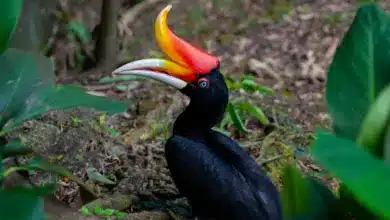Euler’s Flycatchers
The Euler’s Flycatchers, Lathrotriccus euleri is a small passerine bird in the tyrant flycatcher family.
Description:
In appearance, it closely resembles the Empidonax flycatchers, and was formerly placed in that genus, but differs anatomically and biochemically.
Distribution / Range:
It breeds in South America east of the Andes from Colombia and Venezuela south to Bolivia and Argentina, and on the islands of Trinidad and formerly Grenada.
This species is found in the lower and middle levels of forests.
This species is named for the Swiss ornithologist Carl Euler.
Breeding / Nesting:
The nest is made of grass, leaves and plant fibre and placed in a tree fork. The typical clutch is two or three white eggs, which are marked with reddish brown mostly at the larger end.
Description:
The Euler’s Flycatchers is 12.7 cm long and weighs 11g. The upperparts are olive-brown with darker brown wings and two dull buff wing bars. The throat breast is grey, the breast is brown, and the abdomen is pale yellow. There is a white eyering, but no supercilium (line above eye). Males and females look alike. There are other races, differing in the tone of the upper part or underpart colour.
Diet / Feeding:
Euler’s Flycatchers are inconspicuous birds, tending to keep to undergrowth perches from which they sally forth to catch insects.
Call / Vocalization:
The call is a loud hoarse chee-chi-wi-wi-wi.
Subspecies:
- Grenadan Euler’s Flycatcher, Lathrotriccus euleri flaviventris – formerly Empidonax euleri johnstonei; extinct (early 1950s)





